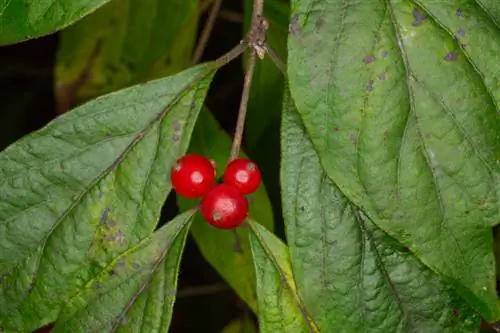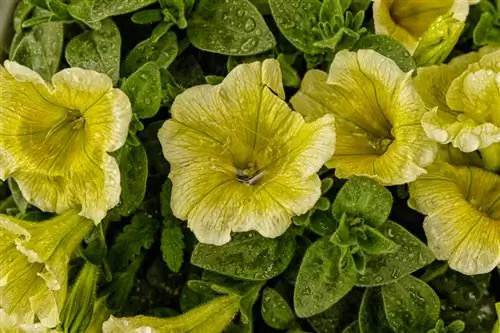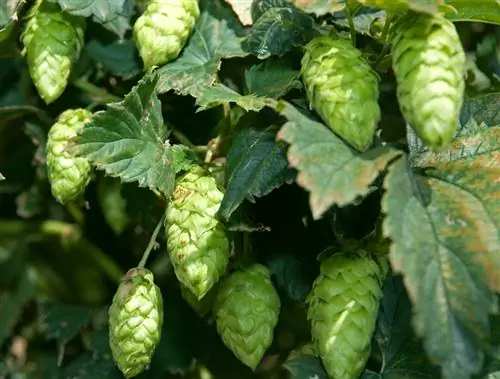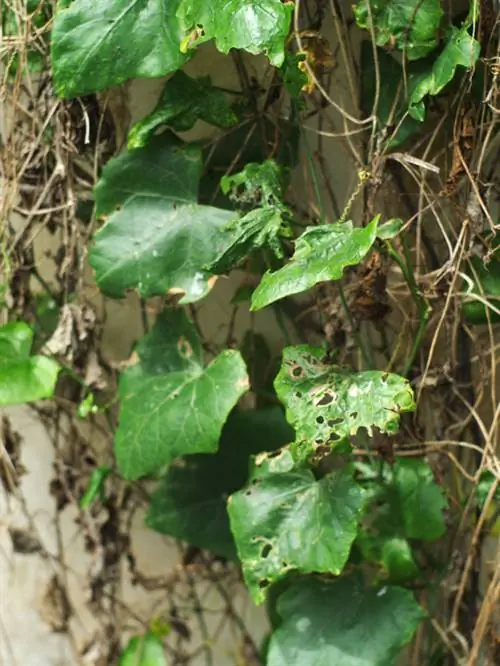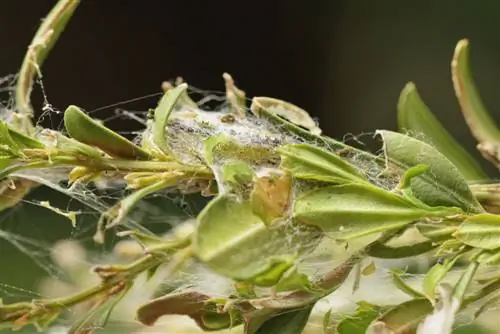- Author admin [email protected].
- Public 2023-12-16 16:46.
- Last modified 2025-01-23 11:20.
Normally, honeysuckle presents a he althy image. But it cannot therefore be described as robust. Quite the opposite: it is considered sensitive and susceptible to illness. Read on to find out more!
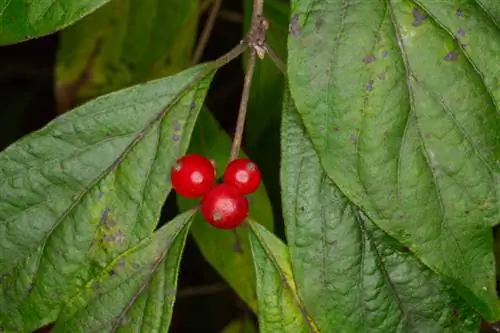
What diseases affect honeysuckle and how to fight them?
Honeysuckle diseases include powdery mildew, downy mildew, root rot and aphid infestation. Preventive measures include drainage, correct watering, avoiding over-fertilization and suitable location. Diseased plant parts should be removed and disposed of to prevent spread.
Mildew - the most common fungal disease on honeysuckle
Honeysuckle is often affected by powdery mildew. You can recognize it by a white coating on the top of the leaves. It is wipeable. The cause is usually excessively high temperatures and the associated dry weather.
Downy mildew also likes to spread on honeysuckle. It can be recognized by a gray layer on the underside of the leaf. Just like powdery mildew, the leaves gradually turn brown until they eventually fall off
Root rot does not stop at honeysuckle
A compacted substrate coupled with a wet environment leads to waterlogging and then root rot doesn't take long to appear. If you smell a foul smell, it may already be too late. In most cases, honeysuckle can no longer be helped if it is infested with this fungal pathogen. Prevention in the form of drainage and correct watering is therefore the be-all and end-all.
Cripples are not a disease
Sometimes the leaves look stunted. They are also whitish to yellowish and curled up. The reason is not illness. Aphids are at work here! You can combat this with soapy water or a nettle decoction, among other things.
Causes of disease attack on honeysuckle
If the honeysuckle is weakened, it is less resistant to pathogens. Then it has other priorities. The following aspects can cause this climbing plant to weaken:
- Overfertilization/nutrient deficiency
- Drought and heat
- Waterlogging
- too sunny location
- improper pruning
- too low humidity
- Stress from transplanting
Be careful when removing diseased plant parts
Diseased plant parts should be removed immediately to prevent the pathogens from spreading to other areas. But be careful: If you cut off the shoots, leaves or flowers, you should wash your hands afterwards and dispose of the cut parts of the plant. They are poisonous.
Tips & Tricks
If the leaves curl in winter, this is not an indication of disease. This is a protective mechanism of honeysuckle. It thus reduces its water loss through evaporation.

